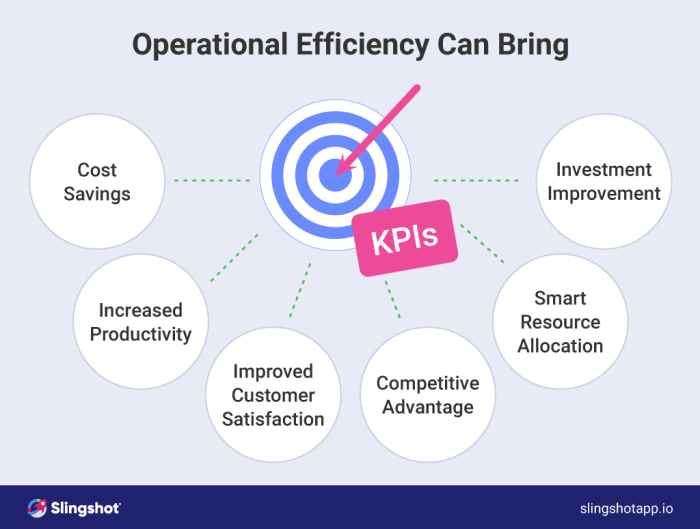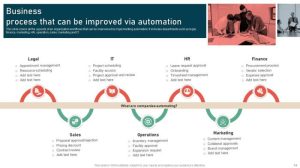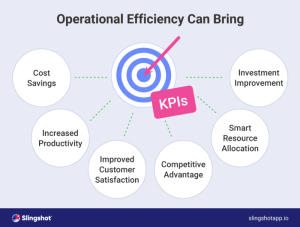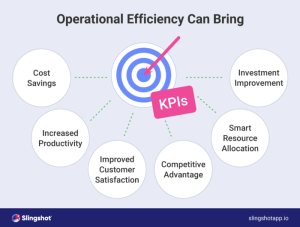
As Operational Efficiency Tools takes center stage, this opening passage beckons readers into a world crafted with good knowledge, ensuring a reading experience that is both absorbing and distinctly original.
In today’s fast-paced business environment, the need for operational efficiency has never been greater. Businesses are constantly seeking ways to streamline processes, cut costs, and improve overall performance. This is where operational efficiency tools come into play, offering smart solutions to enhance productivity and drive success.
Operational Efficiency Tools
Operational efficiency refers to the ability of a business to utilize resources effectively and minimize waste while achieving optimal output. It involves streamlining processes, reducing costs, and improving overall productivity.
Popular Operational Efficiency Tools
There are several operational efficiency tools that modern businesses rely on to enhance their operations. These tools help automate tasks, optimize workflows, and make data-driven decisions. Some popular examples across industries include:
- Customer Relationship Management (CRM) software: CRM tools help businesses manage customer interactions, track leads, and improve sales processes.
- Enterprise Resource Planning (ERP) systems: ERP software integrates various business functions like finance, HR, and supply chain management to streamline operations and improve collaboration.
- Project Management tools: Tools like Trello, Asana, or Jira help teams organize tasks, track progress, and collaborate effectively on projects.
- Data Analytics platforms: Analytical tools like Tableau, Power BI, or Google Analytics help businesses analyze data, gain insights, and make data-driven decisions.
Benefits of Integrating Operational Efficiency Tools
Integrating operational efficiency tools in business operations offers numerous benefits, including:
- Improved productivity: Automation and streamlining of processes lead to increased efficiency and productivity.
- Cost savings: By optimizing workflows and reducing manual tasks, businesses can cut costs and allocate resources more effectively.
- Enhanced decision-making: Data-driven insights provided by these tools help businesses make informed decisions and adapt to market changes.
- Better customer experience: CRM and other tools help businesses better understand customer needs and provide personalized services, leading to improved customer satisfaction.
Process Automation

Automation is a key component of operational efficiency tools, streamlining repetitive tasks and improving productivity across various processes within an organization.
Comparison of Process Automation Tools
- Robotic Process Automation (RPA): RPA software robots can be programmed to replicate human actions to automate repetitive tasks.
- Business Process Management (BPM) software: BPM tools help in designing, modeling, executing, and optimizing business processes.
- Workflow Automation: Workflow automation tools automate the flow of tasks, documents, and information across different departments.
Impact of Process Automation on Operational Efficiency
- Increased Productivity: Automation reduces manual errors and speeds up processes, leading to higher productivity levels.
- Cost Savings: By automating repetitive tasks, organizations can save time and resources, resulting in cost savings.
- Enhanced Accuracy: Automation eliminates the possibility of human error, ensuring consistent and accurate results.
Successful Process Automation Implementations
One real-life example of successful process automation is in the finance sector, where banks have automated loan approval processes using RPA. By automating document verification, credit scoring, and approval workflows, banks have significantly reduced processing times and improved customer satisfaction.
Data Analytics Tools

Data analytics tools play a crucial role in enhancing operational efficiency by helping organizations analyze and interpret vast amounts of data to make informed decisions and optimize processes.
Key Features of Data Analytics Tools for Operational Efficiency
- Advanced data visualization capabilities for easy interpretation of complex data sets.
- Predictive analytics to forecast trends and identify potential issues before they occur.
- Integration with other tools and systems for seamless data flow and analysis.
- Scalability to handle large volumes of data and grow with the organization’s needs.
- Real-time data processing for quick decision-making and response to changing conditions.
How Data Analytics Tools Enable Data-Driven Decisions
Data analytics tools enable organizations to leverage data to drive decision-making processes by providing actionable insights based on historical and real-time data. By analyzing trends, patterns, and anomalies in data, businesses can make informed decisions that are backed by data rather than intuition or guesswork.
Industries Revolutionized by Data Analytics Tools
- Financial Services: Data analytics tools have transformed risk management, fraud detection, and customer insights in the banking and finance industry.
- Retail: Retailers use data analytics tools to optimize pricing strategies, forecast demand, and personalize customer experiences.
- Healthcare: Data analytics tools help healthcare providers improve patient outcomes, optimize resource allocation, and reduce costs through data-driven decision-making.
Communication and Collaboration Tools
In today’s fast-paced business environment, effective communication and collaboration are essential for achieving operational efficiency. Communication and collaboration tools play a crucial role in streamlining processes, improving productivity, and fostering teamwork among employees.
Benefits of Communication and Collaboration Tools
- Facilitate real-time communication: Tools like Slack, Microsoft Teams, and Zoom enable instant messaging, video conferencing, and file sharing, reducing delays in decision-making and problem-solving.
- Promote collaboration: Platforms such as Google Workspace and Trello allow team members to work together on projects, share ideas, and track progress in a centralized location, enhancing overall efficiency.
- Enhance remote work capabilities: With the rise of remote work trends, communication and collaboration tools enable seamless communication and coordination among geographically dispersed teams, ensuring work continuity and productivity.
Best Practices for Selecting Communication and Collaboration Tools
- Assess business needs: Identify the specific communication and collaboration requirements of your organization, considering factors like team size, work nature, and remote work capabilities.
- Consider integrations: Choose tools that integrate well with existing software systems and applications used within your organization to ensure smooth workflow and data exchange.
- User-friendliness and scalability: Opt for tools that are easy to use and can scale as your business grows, accommodating the evolving needs of your team and organization.
Impact of Effective Communication on Operational Efficiency
Effective communication is the cornerstone of operational efficiency as it:
“Reduces misunderstandings, minimizes errors, and fosters a culture of transparency and accountability within the organization.”
When team members can communicate clearly and openly, they can collaborate more effectively, make informed decisions, and resolve issues efficiently, ultimately driving better business outcomes.
Influence of Remote Work Trends on Communication and Collaboration Tools
The shift towards remote work has accelerated the adoption of communication and collaboration tools, enabling employees to stay connected, collaborate on projects, and maintain productivity from anywhere. Tools like Slack, Zoom, and Asana have become indispensable for remote teams, facilitating seamless communication and collaboration despite physical distance.
In conclusion, Operational Efficiency Tools play a crucial role in modern businesses by optimizing processes, improving decision-making, and fostering collaboration. By leveraging the right tools, organizations can achieve a competitive edge and thrive in today’s dynamic market landscape.
FAQ Compilation
How do operational efficiency tools benefit businesses?
Operational efficiency tools help businesses streamline processes, reduce errors, cut costs, and improve overall performance.
What are some popular operational efficiency tools used across industries?
Popular operational efficiency tools include project management software, CRM systems, automation tools, and data analytics platforms.
How can communication and collaboration tools enhance operational efficiency?
Communication and collaboration tools facilitate seamless information sharing, real-time collaboration, and efficient decision-making, ultimately boosting operational efficiency.





